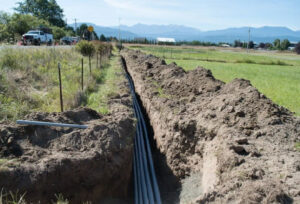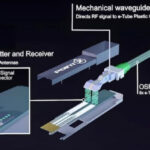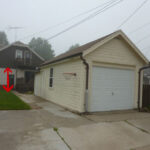
Why Bury Power Lines
1. Introduction
Whenever severe storms or wildfires hit, discussions about burying power lines resurface. The idea is simple — instead of running electrical lines overhead, we place them underground, protecting them from wind, trees, and weather.
But if it’s that effective, why don’t we bury all power lines? The answer lies in a careful balance between cost, reliability, and practicality. This article explores how underground power systems work, their advantages and drawbacks, and how different countries are adopting this approach.
2. What It Means to Bury Power Lines
When we talk about burying power lines, we’re referring to the installation of electrical cables beneath the ground surface. These underground systems can range from small distribution lines carrying power to homes, all the way to massive high-voltage transmission cables that move electricity across cities.
Unlike overhead lines, underground cables are built with strong insulation and protective layers to resist moisture, corrosion, and pressure from soil. They’re designed for long-term reliability and minimal exposure to external damage.
3. Why Go Underground: The Benefits
The most obvious reason to bury power lines is reliability. Underground systems are shielded from storms, lightning, and falling trees — all common causes of outages in traditional overhead networks. That’s why cities prone to hurricanes or ice storms increasingly favor underground solutions.
Safety is another big advantage. With no exposed wires or poles, the risk of electrocution or fire is dramatically reduced. This makes underground systems especially suitable for residential neighborhoods, public spaces, and high-traffic urban zones.
Beyond performance and safety, there’s also an aesthetic appeal. By eliminating visible poles and wires, undergrounding creates cleaner skylines and preserves natural landscapes — an important factor in modern urban design.
Maintenance needs also tend to be lower since underground cables aren’t exposed to weather, vandalism, or wildlife. And in wildfire-prone regions, buried lines significantly reduce the risk of electrical sparks that could ignite surrounding vegetation.
4. The Other Side: Costs and Challenges
Despite the advantages, undergrounding electric lines comes with serious challenges — starting with cost. Installing cables underground can be five to ten times more expensive than erecting poles and stringing wires overhead. Excavation, insulation, and waterproofing drive up the price.
Repairs are also more complicated. If a fault occurs, it’s harder to locate and fix compared to overhead lines that are visible and easily accessed. Specialized detection equipment and crews are required, often leading to longer outages.
Another technical issue is heat dissipation. Underground cables don’t cool as efficiently as overhead conductors exposed to air, which can limit their current-carrying capacity unless cooling systems or advanced materials are used.
Finally, in flood-prone or coastal areas, underground systems are vulnerable to water ingress if the insulation or sealing is compromised — a risk that can shorten service life.
5. Why We Don’t Bury All Power Lines
So, if underground systems are so beneficial, why aren’t all power lines buried? In short — economics and geography. The upfront construction cost for nationwide underground networks would be astronomical, and in many areas, rocky soil or remote distances make it impractical.
As a result, most countries take a hybrid approach: overhead lines for long-distance transmission and rural areas, and underground cables for cities or critical infrastructure. This balance ensures both cost efficiency and system reliability.
6. Underground Power Around the World
Different regions have taken varied paths toward undergrounding:
Europe leads with about 60–80% of its power distribution networks underground, driven by dense urban populations and strong aesthetic regulations.
In the United States, around 40% of lines are buried, particularly in new developments, while rural areas remain overhead due to cost.
Japan has undergrounded roughly half its distribution system, partly for earthquake resilience and partly for urban design.
China is rapidly expanding underground networks in smart city projects.
Singapore, with its limited space, has achieved nearly full underground coverage.
7. Bringing Power Underground to Homes
For homeowners, it’s absolutely possible to have underground electrical service lines running from the utility pole or transformer to the house. This usually involves installing a service conduit, laying underground-rated cables (such as URD or UF-B types), and connecting them to the main distribution panel.
However, the process isn’t simple. It requires professional planning, permits, and coordination with the utility company — and the cost can range from a few thousand dollars upward, depending on distance and terrain.
8. The Future of Underground Power Systems
The future of underground power looks promising. Technological advances in XLPE insulation, smart fault monitoring, and trenchless installation are gradually lowering costs and improving efficiency.
More utilities are adopting hybrid power systems that combine overhead transmission with underground distribution. This approach enhances resilience against extreme weather while supporting urban modernization and climate adaptation goals.
9. Conclusion
Burying power lines is not just about hiding wires — it’s about building safer, more reliable, and more resilient power infrastructure. Although high costs and technical challenges still limit widespread adoption, the long-term benefits are undeniable.
As cities modernize and power grids evolve, underground cables will continue to play a key role in shaping the future of electricity distribution worldwide.
⚡ Reliable Underground Power Cable Supplier – TOT Wire & Cable
At TOT Wire & Cable, we supply a full range of underground electrical cables, including XLPE-insulated, armored, and low-smoke halogen-free types. Our products are trusted by contractors, power utilities, and infrastructure projects around the world.
📞 Contact us today to find the right underground power cable solution for your next project — combining top quality with competitive pricing.





